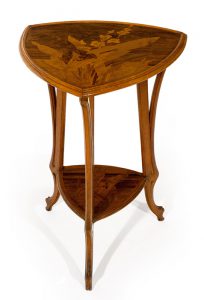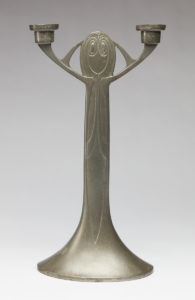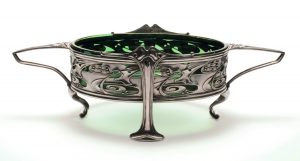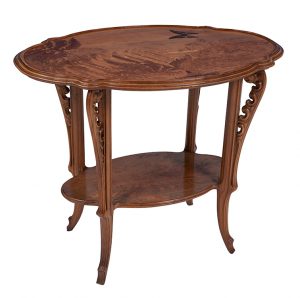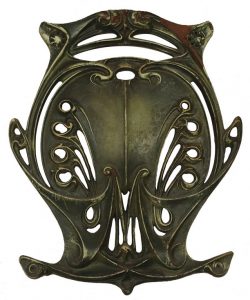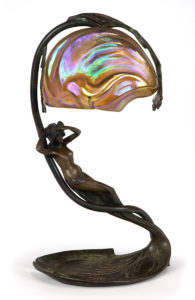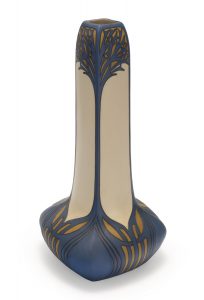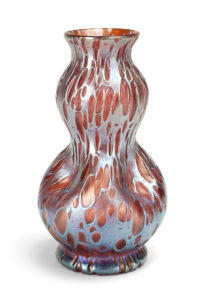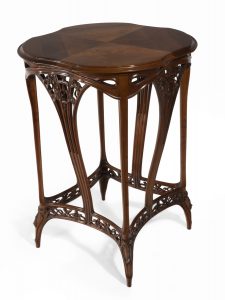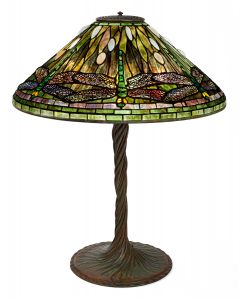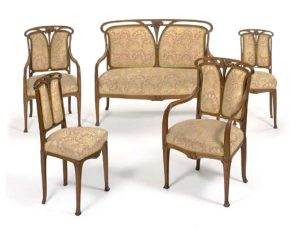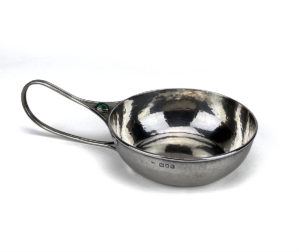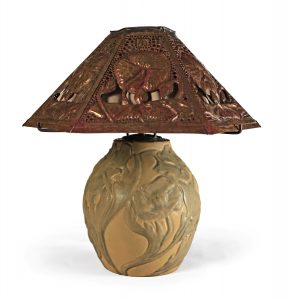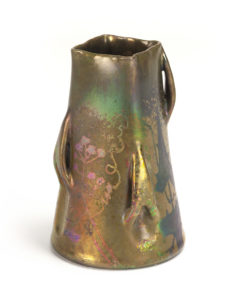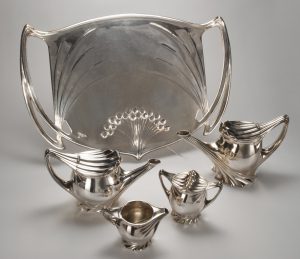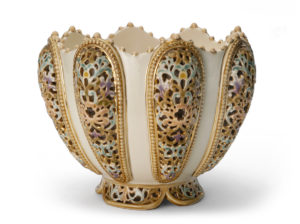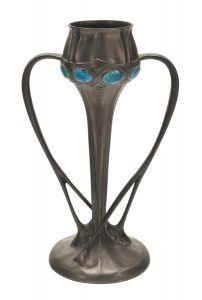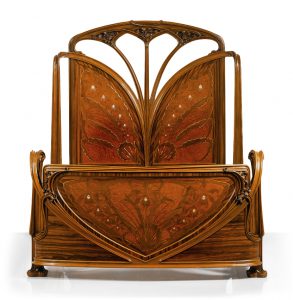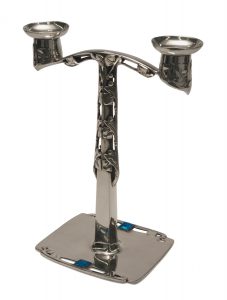Art Nouveau, International 1880s-c. 1918; American 1890s-c. 1918
This movement/style originated virtually simultaneously in France, Belgium and England. Siegfried Bing gave the style its name when he opened a shop and gallery in Paris in December 1895 called Maison de L’Art Nouveau (House of New Art). He soon expanded his gallery with workshops and was responsible for significantly exposing the “new art”. Prior to that time, the movement in France was called Le Style Moderne (the Modern Style). It soon spread to many other countries and was variously called: in German speaking countries Jugendstil (Youth Style) and specifically in Austria Sezessionstil (Secession style); in Italy Stile Liberty (Liberty Style from London's Liberty & Co.) or Stile Floreale (Floral Style) and in Spain Modernisme. Art Nouveau is distinguished by its graceful, curving designs mostly emulating botanic forms, but sometimes bird, animal and human female forms. Examples are whiplash handles, playful serpentine grills and arching buttresses. Art Nouveau is more restrained in its curves and amount of decoration than Victorian design. The sinuous references to plants, tendrils, flowers and other natural forms are stylized rather than being realistic.

